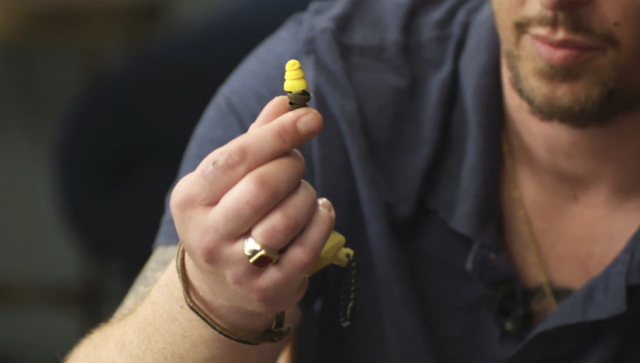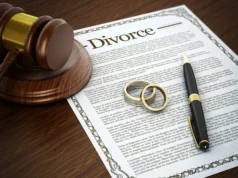
Can you imagine being a soldier, trusting a product to protect your hearing in the line of duty, only to find out that it’s defective? That’s exactly what happened to thousands of military service members who used 3M’s Combat Arms earplugs. This isn’t just a story of a faulty product; it’s a saga that unfolded into one of the largest mass tort cases in U.S. history. In this blog post, we’ll delve into the intricate timeline of the 3M earplug lawsuit, revealing how a product meant to protect ended up causing harm.
The Genesis of the Lawsuit

The story begins between 2003 and 2015, when 3M’s Combat Arms earplugs were standard issue for U.S. military personnel deployed in Iraq and Afghanistan. These earplugs were supposed to protect soldiers from the loud sounds of warfare while allowing them to hear softer, closer sounds. However, the earplugs were anything but perfect. In 2016, Moldex-Metric, Inc., a California-based competitor, blew the whistle on 3M. They filed a lawsuit claiming that 3M knowingly sold defective earplugs that didn’t meet the government’s protection standards. This whistleblower lawsuit set the stage for a legal battle that would involve hundreds of thousands of service members and veterans.
The Legal Rollercoaster
Just when you thought the case would be straightforward, it turned into a legal rollercoaster. Both sides had their share of wins and losses, making it one of the most convoluted legal battles in recent history. 3M even attempted a legal maneuver to move the lawsuits to bankruptcy court, a strategy that ultimately failed. This failure was a pivotal moment in the case, as it led to intensified settlement talks and kept the spotlight firmly on 3M’s actions.Key Moments in the Timeline
The Bankruptcy Strategy

One of the most intriguing twists in this legal saga was 3M’s attempt to shield itself using its subsidiary Aearo’s bankruptcy as a defense. The company hoped that by filing for bankruptcy protection for Aearo, they could potentially halt or at least slow down the lawsuits. However, the court wasn’t buying it. The judge denied 3M’s bankruptcy protection bid, forcing the company back to the negotiating table.
The Judge’s Role
Judges often play a background role in legal cases, but not in this one. The presiding judge took an active role in pushing both parties towards a settlement. The judge even imposed sanctions against 3M for what was termed their “brazen abuse of the litigation process.” This proactive stance from the bench kept the case moving and prevented 3M from stalling the proceedings.
The Settlement

After years of legal wrangling, a monumental moment arrived on August 29, 2025. Both parties agreed to a staggering $6.01 billion settlement. This wasn’t just a win for the plaintiffs; it was a statement on corporate accountability and the importance of product safety.
The Flawed Product
You might be wondering, “What exactly was wrong with these earplugs?” Well, the design was fundamentally flawed. The earplugs were too short to effectively seal the ear canal, leading to inadequate protection against loud noises. This design flaw was at the heart of the lawsuit, as it directly contributed to the hearing damage suffered by countless military personnel.
The Human Cost
The numbers are sobering. Hearing problems are the No. 1 service-related disability among American veterans. Over 1.3 million veterans receive disability compensation for hearing loss, and more than 2.3 million for tinnitus. These statistics underscore the human cost of this defective product and make the lawsuit all the more significant.The Settlement Details
Who’s Eligible?

About 240,000 people are expected to be part of the more than $6 billion settlement. But there’s a catch: 3M has the right to walk away from the deal if less than 98% of eligible claimants decide to participate. Given the gravity of the situation, it’s likely that this threshold will be met, ensuring that justice is served.
How Will the Money Be Distributed?
The settlement amount will be paid out from 2025 to 2029, with $1 billion of it being in the form of 3M stock. Importantly, 3M has not admitted liability as part of the settlement, a common practice in such cases.
The Legal Implications

Not a Class-Action
When you hear about a large number of people being affected by a single product, you might think it’s a class-action lawsuit. However, this case is different. It’s an MDL, or Multi-District Litigation, which allows each plaintiff to receive a settlement based on their individual circumstances, rather than a one-size-fits-all payout.
Advantages of an MDL
One of the benefits of an MDL over a class-action lawsuit is the personalized nature of the settlements. Each plaintiff will receive a portion of the settlement proceeds based on their specific situation, making it a more equitable resolution for all involved.
3M’s Defense
3M has not been silent throughout this ordeal. The company argues that the earplugs are not defective by design and only fail when improperly worn. They even claim that the earplugs are a “significant innovation in hearing protection,” a statement that stands in stark contrast to the experiences of the plaintiffs.
Plaintiffs’ Arguments
The plaintiffs base their case on a legal theory known as product liability. They argue that the earplugs were defective in design, manufacturing, and labeling. The fact that punitive damage awards have been substantial in several cases suggests that juries believe 3M demonstrated at least indifference to the risks posed to service members.Conclusion
The 3M earplug lawsuit is more than just a legal case; it’s a narrative about trust, responsibility, and the consequences of corporate actions. It serves as a stark reminder that companies have a duty to ensure the safety of their products, especially when they are used in life-altering situations like combat. The lawsuit also highlights the resilience and determination of the plaintiffs, who fought for justice against all odds.













